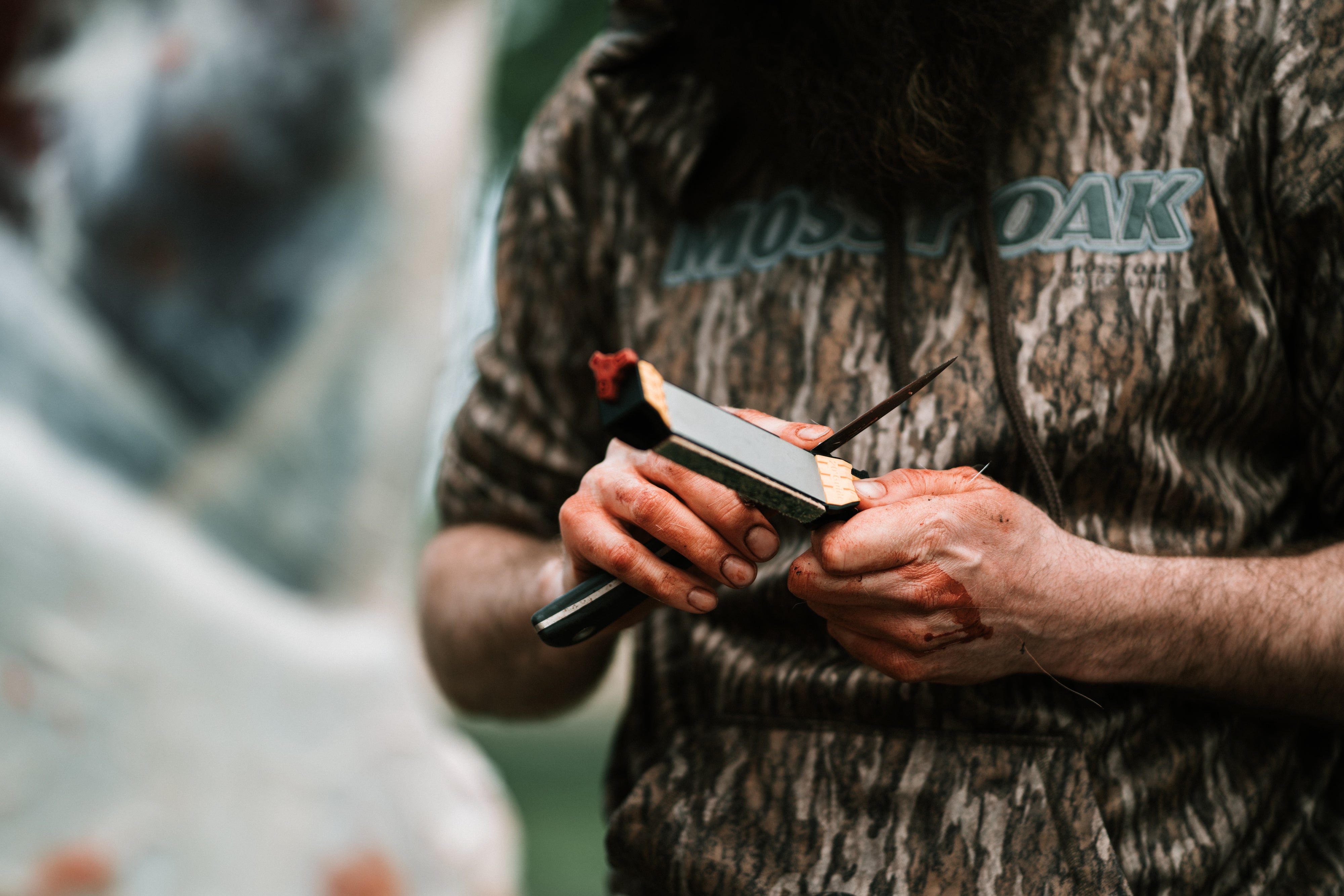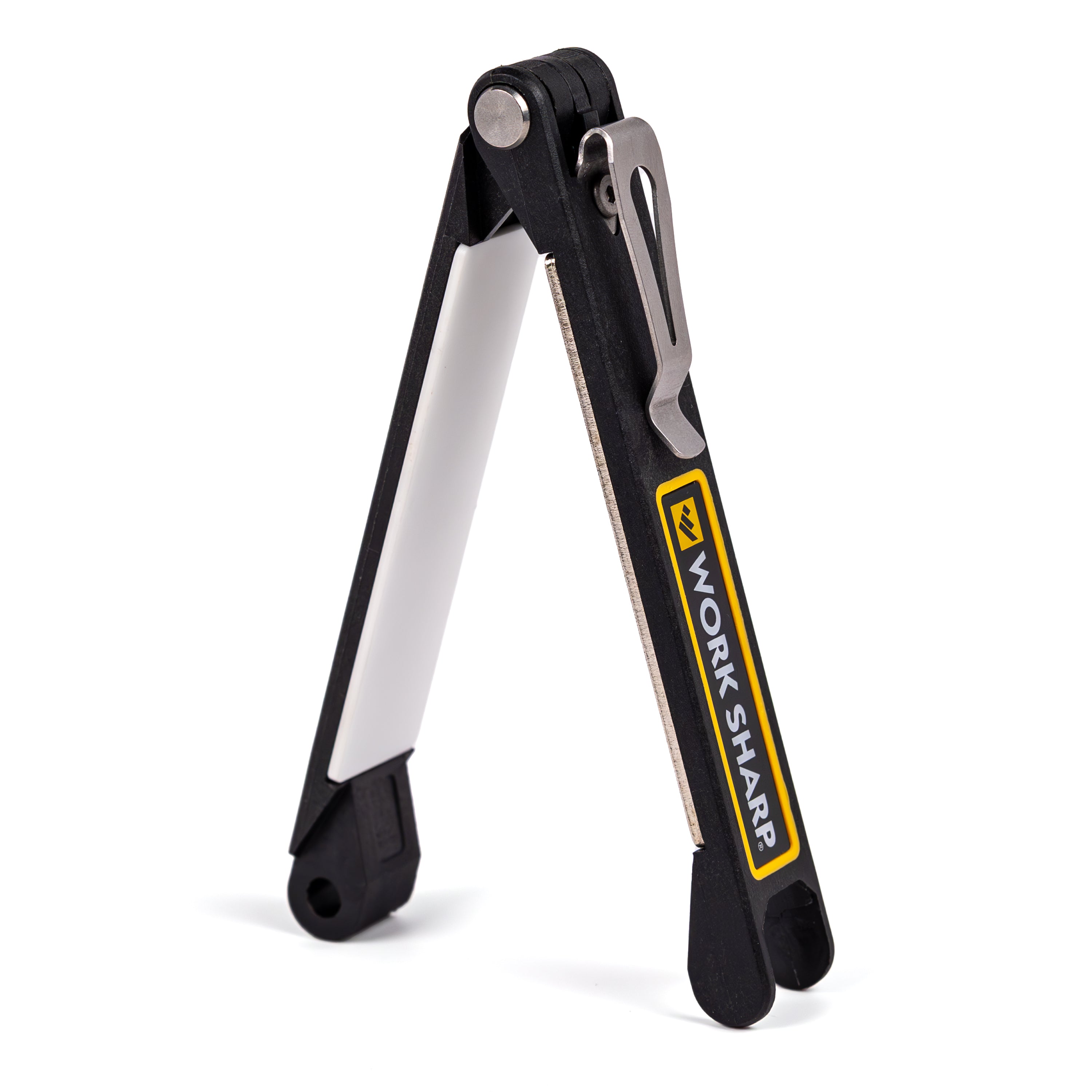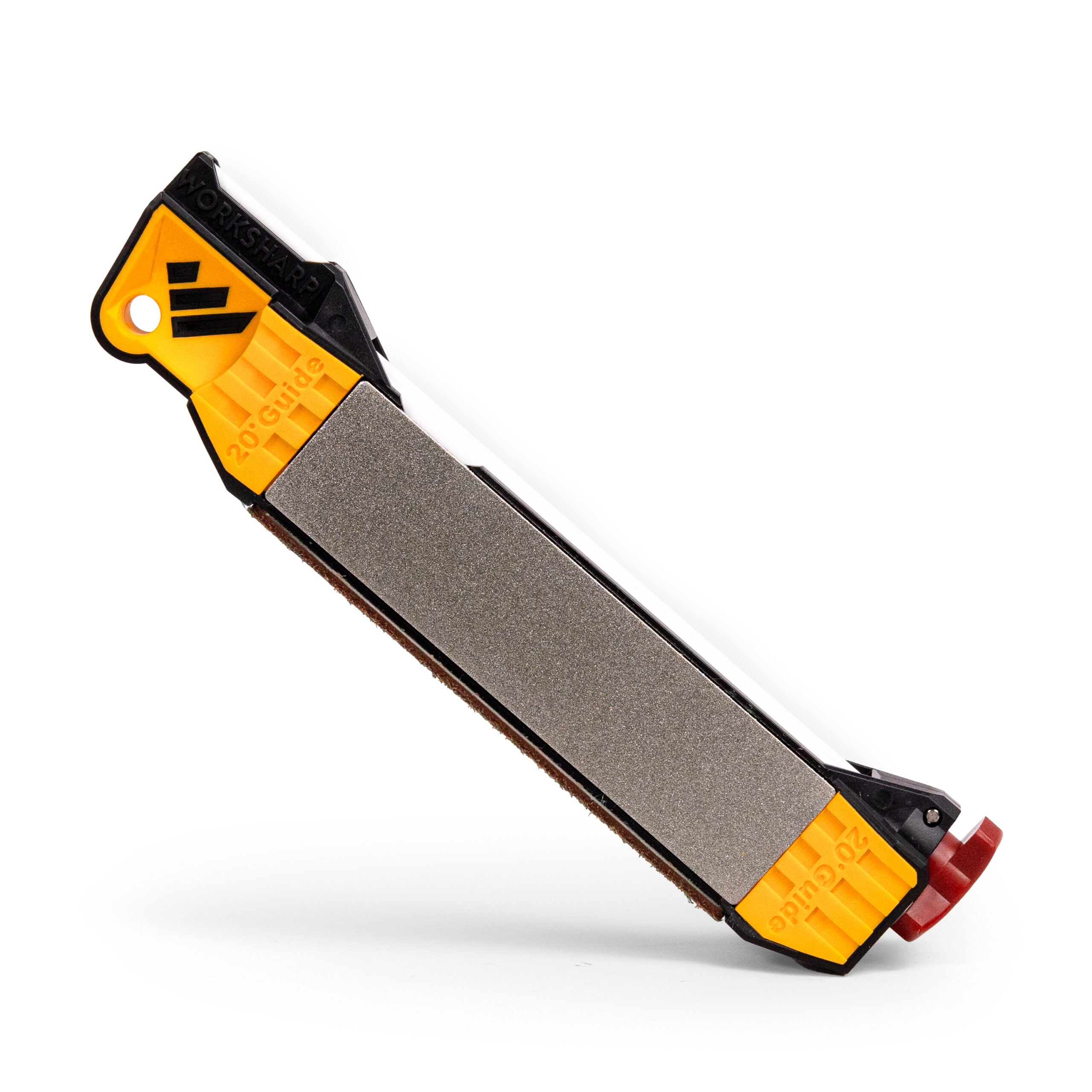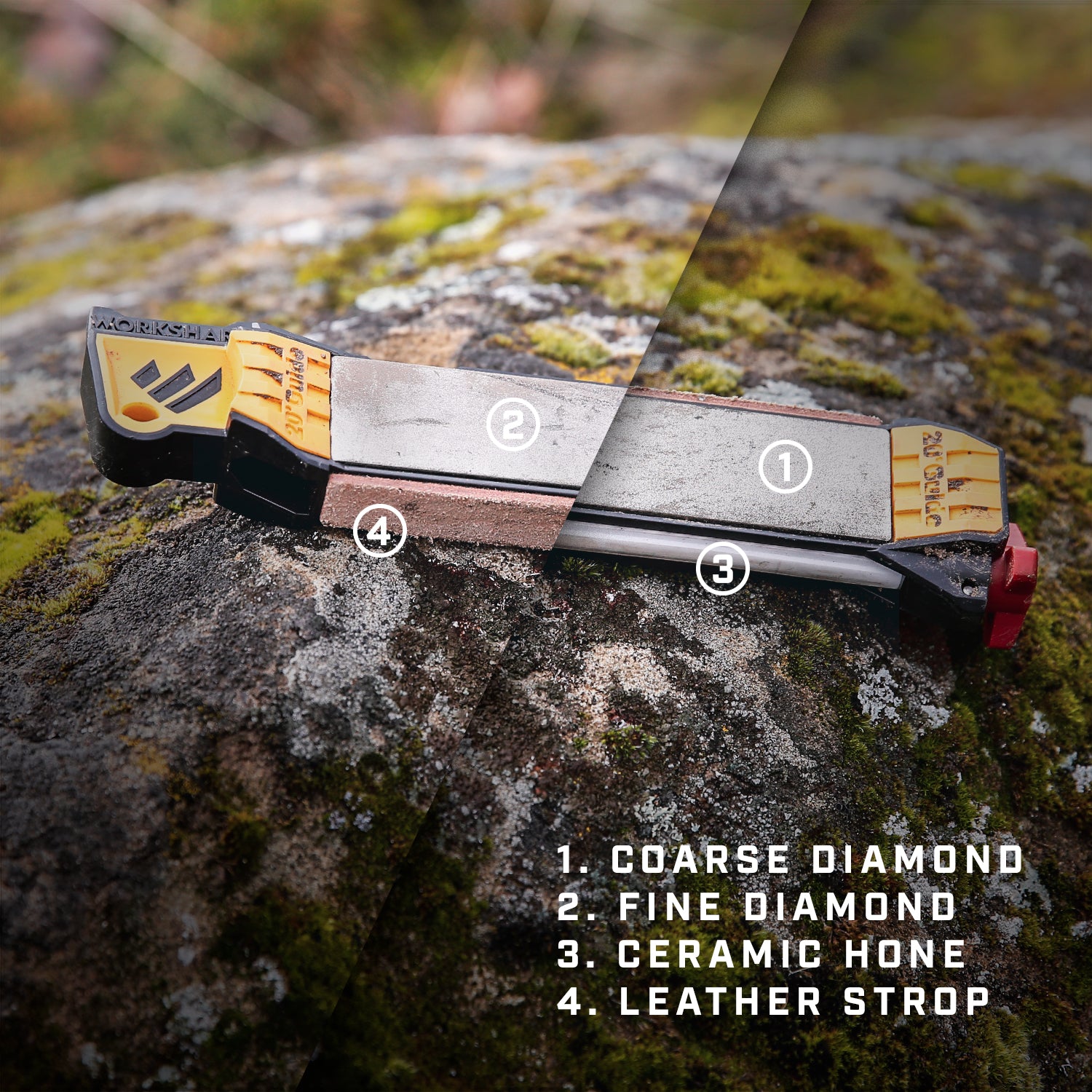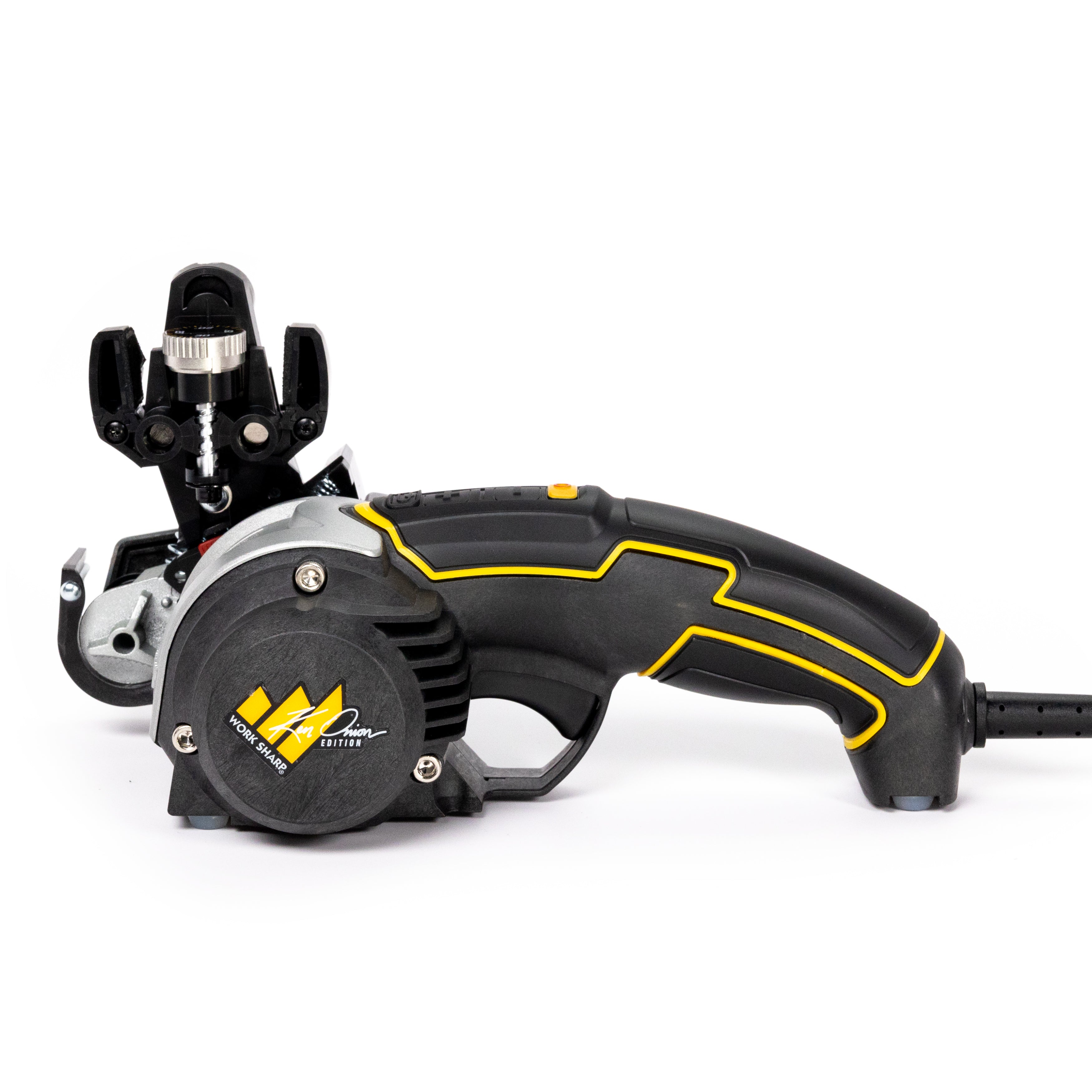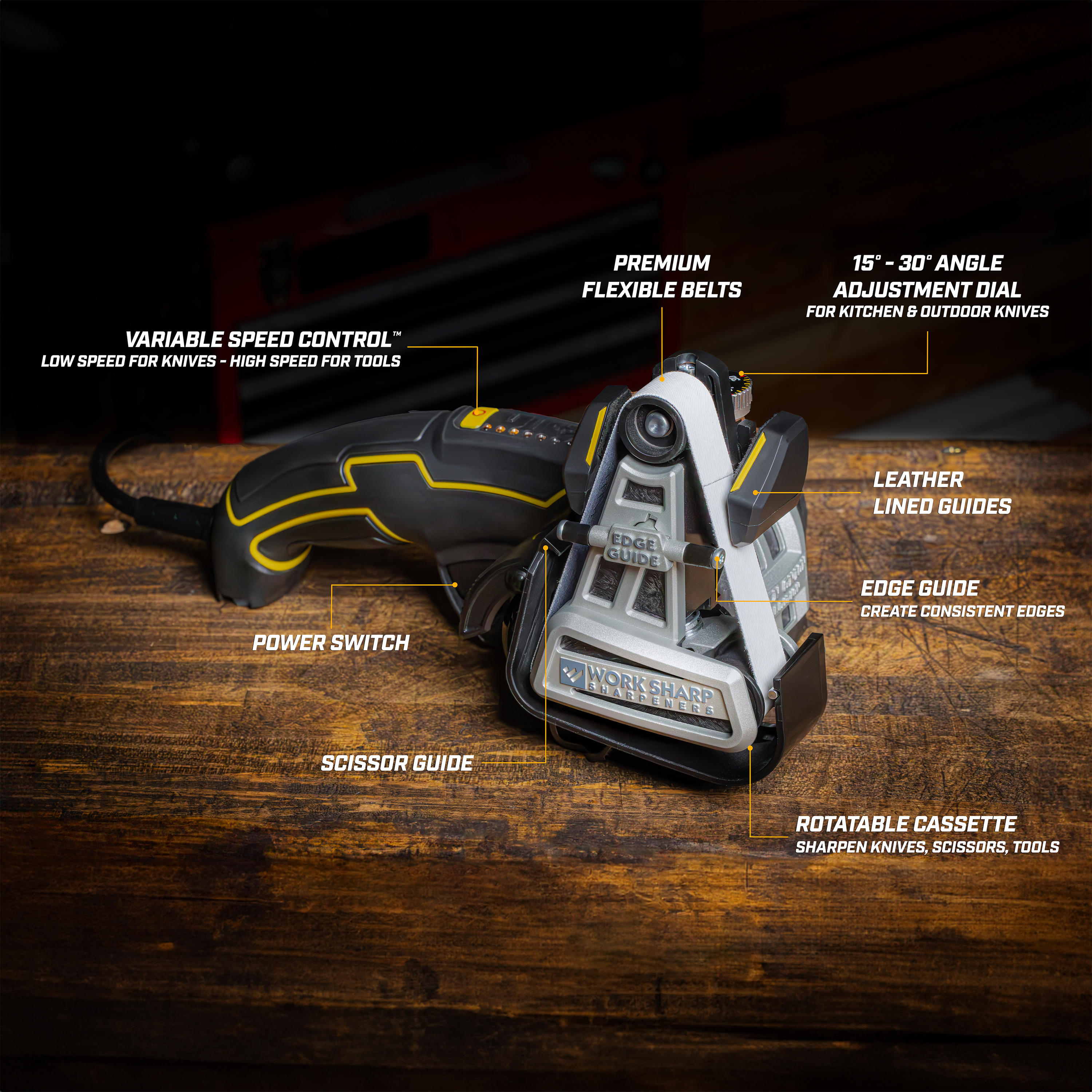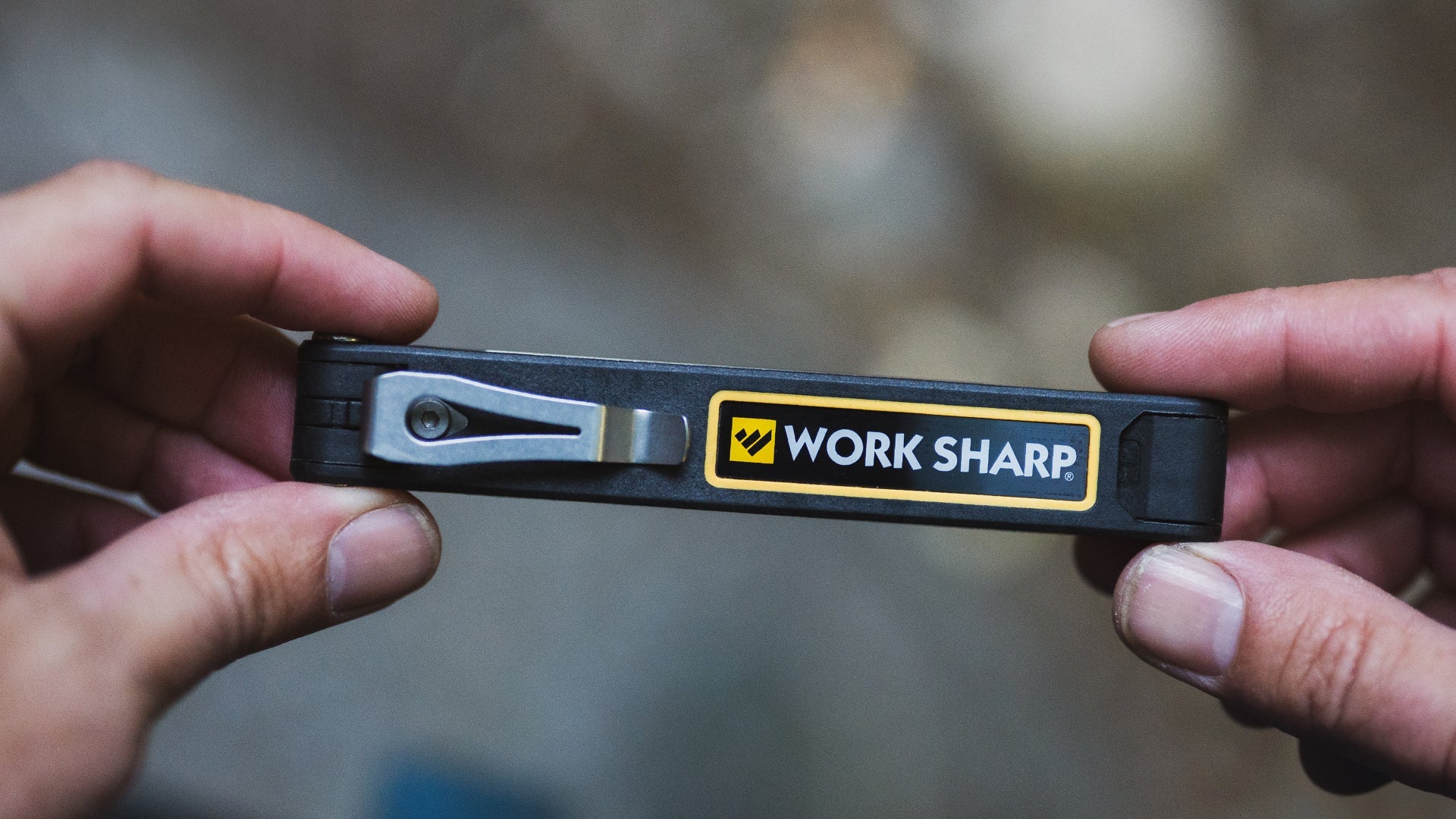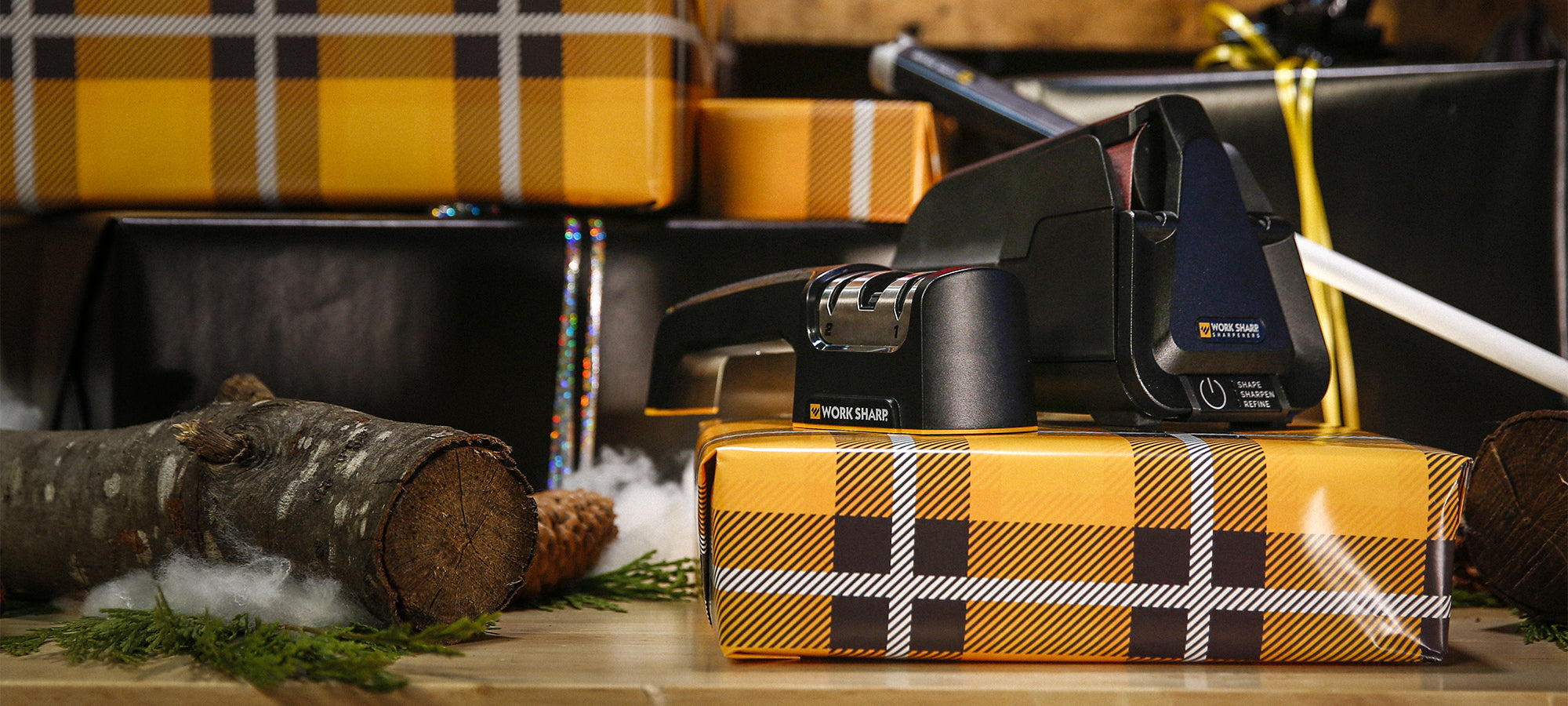Are you still using a carbide pull-through sharpener for your hunting knives? It’s time to rethink that decision. While these sharpeners are fast and convenient, they can also cause damage to your blades. If you want to keep your hunting knives in top condition, it’s time to upgrade your sharpener.
Why Carbide Sharpeners Are Bad for Your Knife
Carbide pull-through sharpeners are popular because they’re quick and easy. You simply pull the blade through and get a sharper edge, fast. But here’s the catch: these sharpeners shear material from the sides of your blade causing chipping and burrs which cause premature wear and leaving a weaker edge. They’re fine for inexpensive knives made with soft steel, but it’s a risky choice for your high-quality hunting knives.

So What Are the Best Sharpeners for Hunting Knives?
To preserve your blade and keep it sharp, choose a hunting knife sharpener that maintains the edge without damaging the blade. Here are three top picks:
- Guided Field Sharpener: A complete system with diamond plates, ceramic rods, and a leather strop. This sharpener covers everything from fixing chips to refining your knife's edge, making it perfect for field use.
- Folding Field Sharpener: Lightweight and compact, this sharpener protects its abrasives when closed, making it easy to carry in your pack without scratching other gear.
- Work Sharp x MKC Knife Sharpener: Featuring 17° and 20° angle guides, this tool is ideal for precise sharpening on thinner blades and is built for the field.

How to Sharpen Your Hunting Knife Properly
For a long-lasting edge, keep three things in mind:
Blade shape: Sharpen from heel to tip, but do not sharpen over the tip. Stop with the tip of the knife on the stone. Proper technique is critical.
Blade Steel: Premium steels can be sharpened to finer angles and still maintain edge retention. Typically steels like MagnaCut, S30V, S90V, M390, 20CV, or high carbon steels can hold a stronger edge at finer angles. Although these steels will take a little more effort to sharpen.
Edge Angle: Most hunting knives fall between a 17° to 25° angle. Use a sharpener with built-in angle guides to ensure consistency and protect your blade. Tools like the Guided Field Sharpener or MKC Knife Sharpener make it easy to keep your knives sharp without overdoing it.

Why Proper Sharpening Matters
Choosing the right knife sharpener ensures you’re not just getting a sharp edge but maintaining the longevity of your knife. Carbide sharpeners might seem like a quick fix, but they’re taking years off your blade. Switching to a guided sharpener with diamond or ceramic abrasives will keep your knife sharper for longer and prevent unnecessary wear and tear.
Keep your knife in peak condition. Upgrade to a field sharpener that respects your blade and your hunting investment. A sharper knife means a more successful season and a tool you can pass down for generations.
Optimize your edge—sharpen smarter, not harder.

